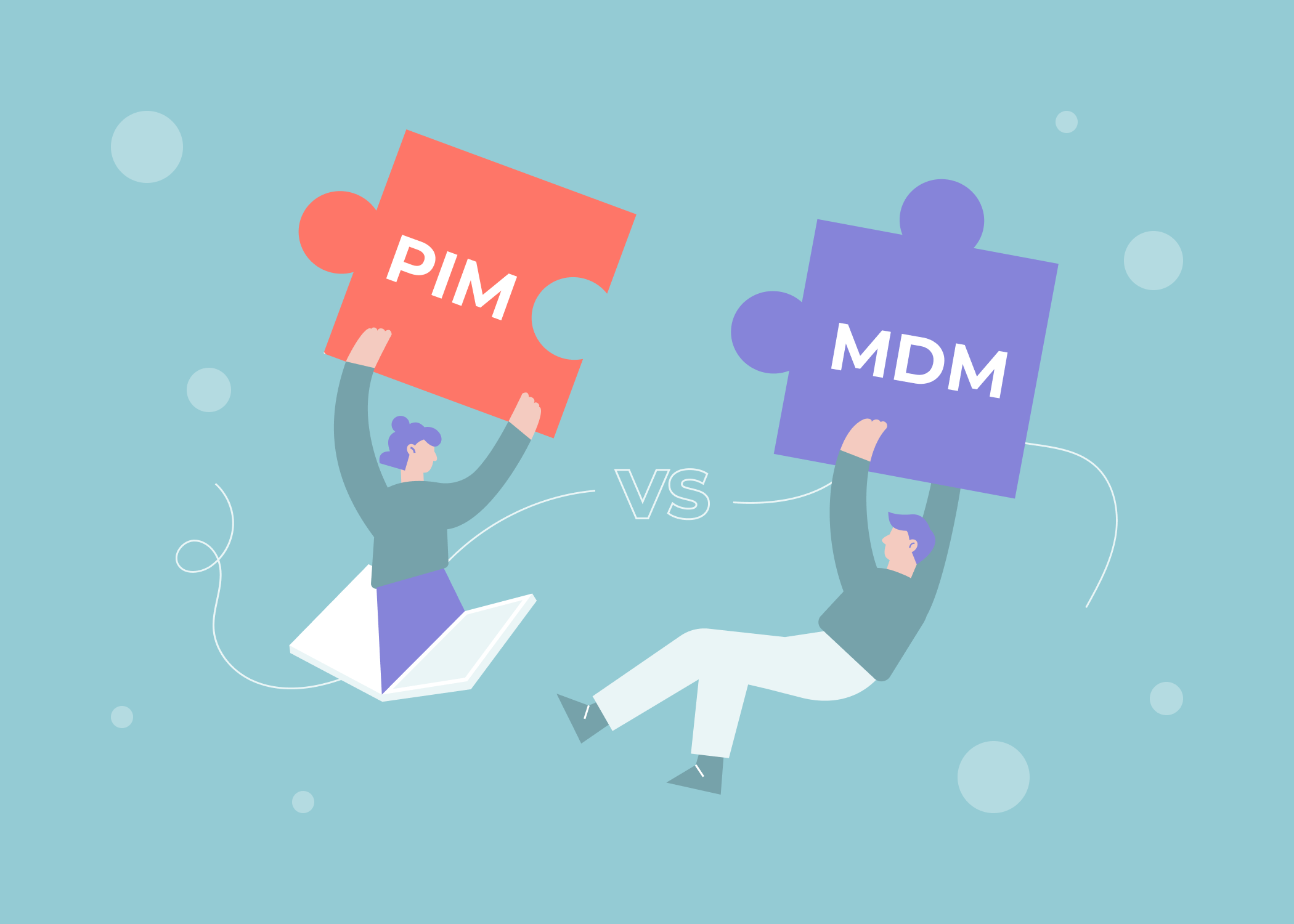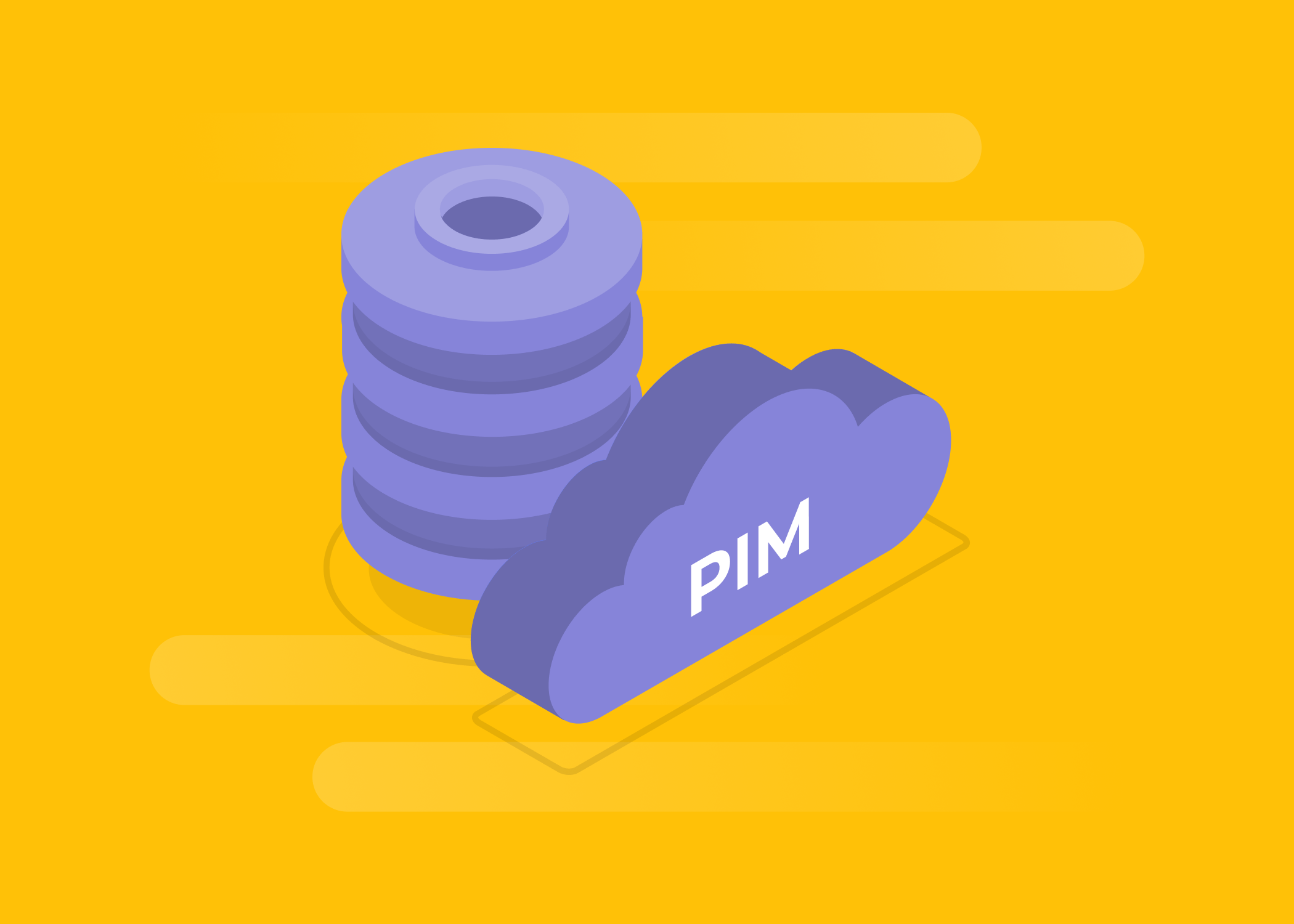Content
PIM Best Practices: How to Succeed with PIM

Time to read: 10 minutes
As product catalogs continue to grow, the potential for product data chaos increases without proper PIM. Fortunately, there is a wide range of PIM best practices to help businesses maximize their product data by using the right tools and processes. This article explains how PIM can help your business succeed and identifies PIM best practices that you should know. Using these strategies, you can ensure that your product data are accurate, current, and optimized for maximum product visibility. Let’s get started!
What Is PIM?
PIM (Product Information Management) is the process of organizing product-related data to support product marketing, sales, and other business processes. It helps organizations keep their product information current and accurate. The goal of PIM is to simplify product data management and ensure that product information is available quickly and easily across various systems, channels, teams, and markets.
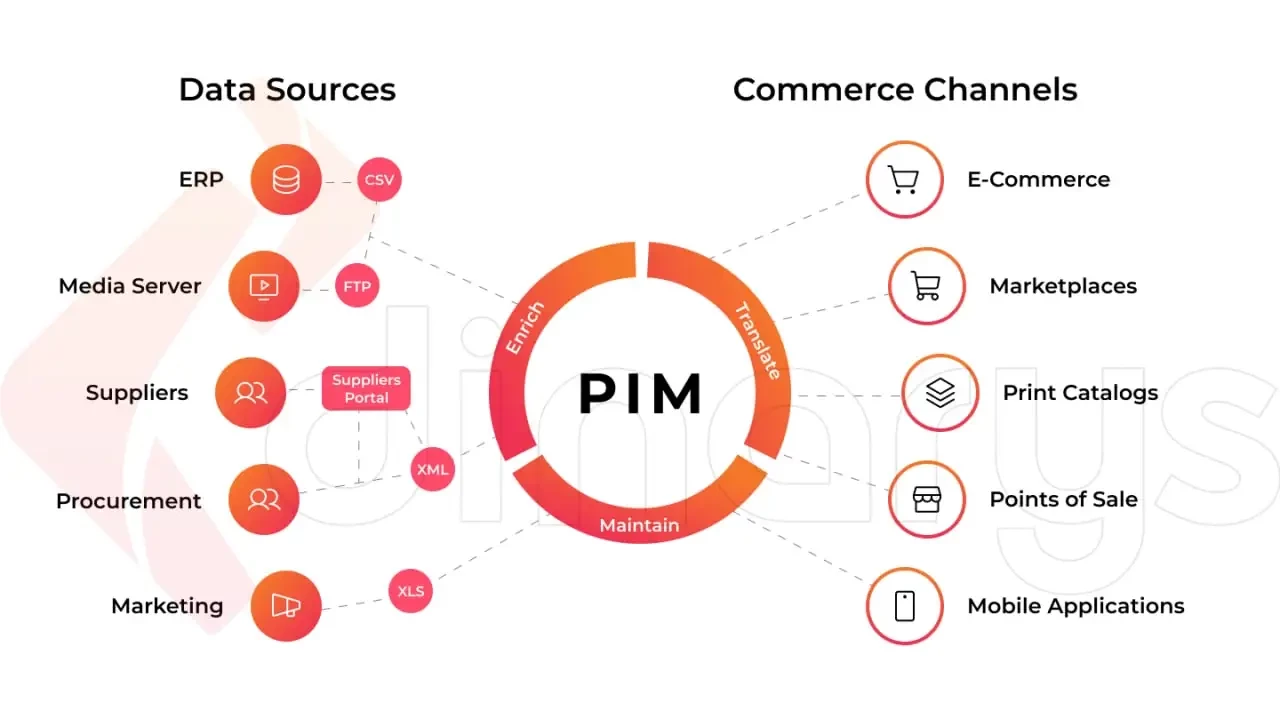
PIM is a comprehensive product management system for handling product data, such as product descriptions, reviews, images, pricing, and availability. It also helps companies ensure compliance with local regulations and standards. In addition, businesses can use PIM to streamline product development processes by tracking new product launches and their progress.
By implementing PIM best practices, companies can improve product visibility, maximize product efficiency, and enhance customer satisfaction. Leveraging PIM solutions makes it easier for organizations to manage product data across multiple systems and channels. In addition, companies can update information in real time and provide customers with accurate product information. Ultimately, PIM best practices ensure that product data are organized properly, remain accurate, and are easily accessible to customers and internal teams.
If you would like to learn more about PIM, read our blog article.
The Importance of PIM Systems
PIM systems are essential for product data management. PIM systems enable product information to be managed in a centralized location, ensuring that all product details remain consistent across different channels and sales outlets. This allows customers to receive accurate information about the products they are considering, with minimal effort required from the business.

By using PIM best practices, businesses can ensure that their product data are managed efficiently and consistently, which increases product visibility and sales and reduces the amount of time spent on product data maintenance and updates. Businesses should consider using PIM services to centralize product data for easy access and control and to ensure that product information is accurate and consistent across multiple channels.
Lets talk about itHave a project in mind?
To provide a seamless product experience, businesses should consider integrating product data into their other systems, such as ERP, e-commerce, and CRM. This helps reduce product data entry errors and speeds up product updates. In addition, businesses can use PIM tools to automate product updates and data-sharing processes across multiple channels.
If you would like more information about PIM, you should also read The Differences between PIM and MDM.
Best PIM Practices
To make the most of the PIM efforts, companies need to adopt best practices to set up and manage their product information. The most important PIM best practices include the following:
Create a Customer-Centric Data Model
Creating a customer-centric data model is critical for any organization that wants to provide the best possible customer experience. A customer-centric data model prioritizes the customer, making sure that all data and processes are designed with the customer in mind. This means personalizing the customer experience as much as possible, understanding what customers want and need, and making it easy for them to get the information they need. It also means constantly collecting data about customer behavior and using it to improve the experience. By creating a customer-centric data model, organizations ensure that they always put their customers first.
Tips for creating a customer-centric data model:
- Gather customer feedback and use it to inform product decisions.
- Design product data structures with the customer in mind.
- Create product hierarchies that are easy for customers to navigate.
- Automate product maintenance to ensure accuracy and relevancy.
- Utilize artificial intelligence and machine learning techniques to better understand customer needs.
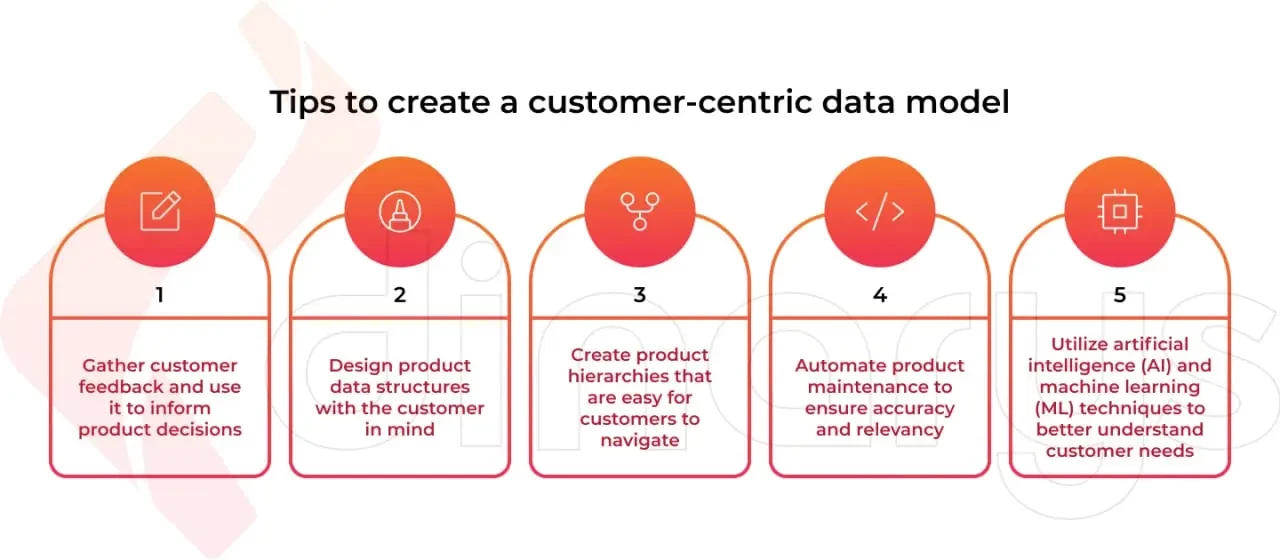
Prioritize Product Information Accuracy and Consistency
Accurate product information is essential for any organization that wants to provide a great customer experience. It is important to ensure that product descriptions, images, and other details are accurate and consistent across all channels by regularly reviewing product information and ensuring that it remains current with the latest changes in technology or market trends. Additionally, organizations should make sure that product information is optimized for various types of devices so that customers can access it easily wherever they are. By prioritizing the accuracy and consistency of product information, organizations give their customers the best possible experience.
Tips for prioritizing product information accuracy and consistency:
- Review product information regularly and update it as necessary.
- Create product descriptions that are clear and concise.
- Utilize product images to help customers better understand the product.
- Ensure that product information is optimized for various types of devices.
- Leverage product categorization to improve accuracy and consistency.
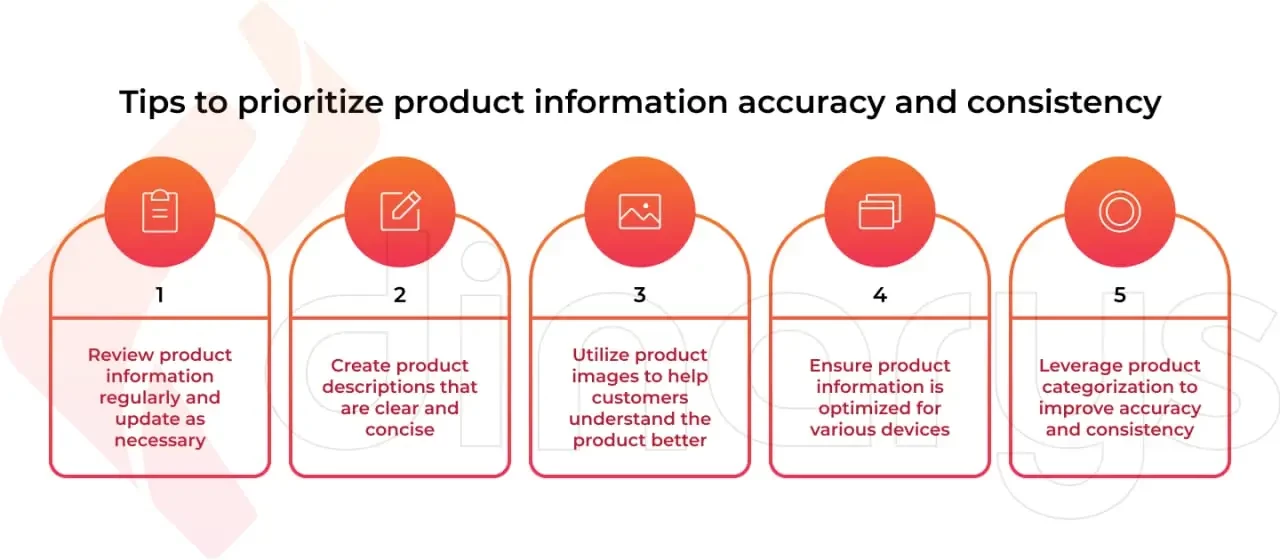
Lets talk about itHave a project in mind?
Optimize Product Data Visibility
Organizations must also optimize product data visibility if they want to succeed with PIM. This means making product information as visible and accessible as possible to customers. Organizations can do this by creating product detail pages that are easy to find, leveraging product search optimization techniques, and integrating product data with external systems, such as ERP or CRM. By optimizing product data visibility, organizations ensure that their customers always have the information they need to make informed decisions.
Tips for optimizing product data visibility:
- Create product detail pages that are easy for customers to find.
- Leverage product search optimization techniques.
- Integrate product data with external systems, such as ERP or CRM.
- Utilize customer segmentation techniques to better target product information.
- Automate product updates across different channels for maximum visibility.
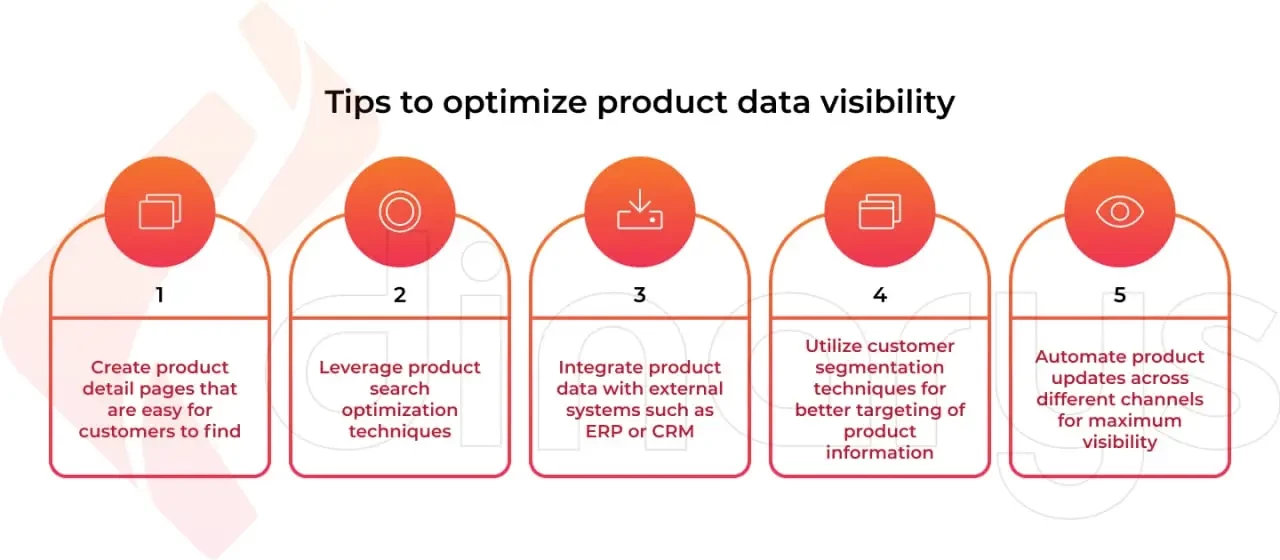
Select the Right PIM Platform for Your Needs
To succeed with PIM, organizations must select the right PIM platform by evaluating different solutions and choosing one that meets their specific needs and their customers’ needs. Organizations should look for a platform that allows for easy product data entry and updates, enables product search optimization techniques, and provides customer segmentation capabilities. By using the right PIM platform, organizations can ensure that they offer their customers an optimal experience.
Tips for selecting the right PIM platform:
- Understand your organization’s needs.
- Evaluate different solutions based on their features.
- Look for platforms that provide customer segmentation capabilities.
- Make sure that product data entry is quick and easy.
- Ensure that product search optimization features are available.
- Test the platform before making a final decision.

Lets talk about itHave a project in mind?
Test Your PIM Implementation
Organizations should test their PIM implementation to ensure that it works as expected by analyzing product data entry times, product search optimization techniques, and customer segmentation capabilities. By testing their PIM systems, organizations can identify areas for improvement and ensure that they provide a great experience to their customers.
Tips for testing your PIM implementation:
- Analyze product data entry times.
- Test product search optimization techniques.
- Evaluate customer segmentation capabilities.
- Check product visibility across all channels.
- Monitor analytics to measure the success of PIM initiatives.
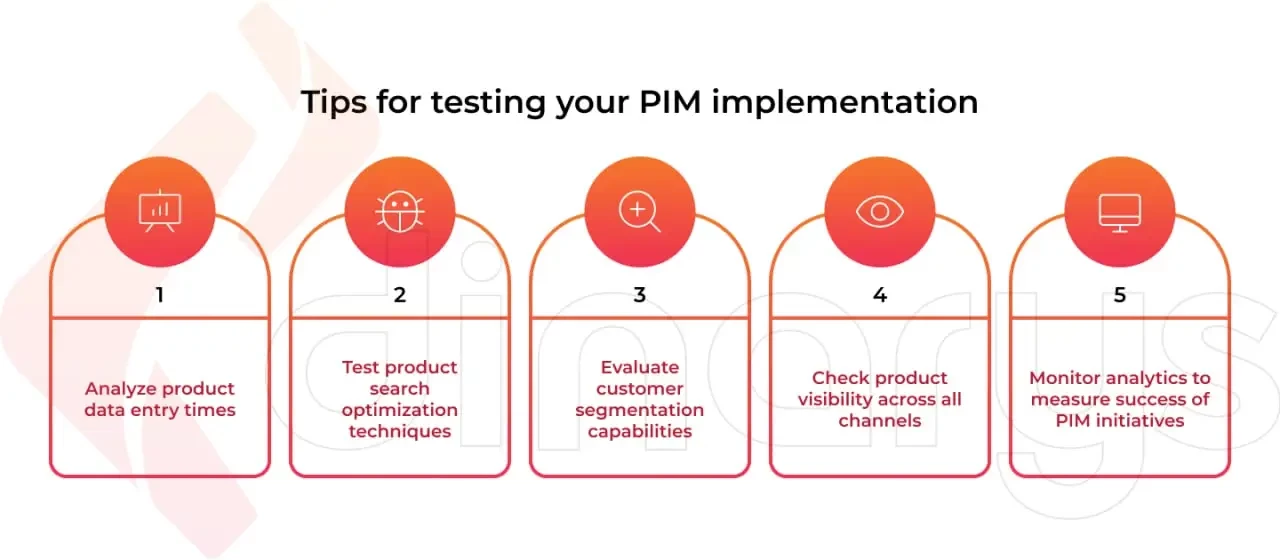
Use PIM to Strengthen your SEO and Marketing
Finally, organizations can use PIM to strengthen their SEO and marketing efforts. By optimizing product pages for search engines and leveraging product categorization, organizations can increase their visibility in search engine rankings. In addition, organizations can use PIM to generate product-related content, such as product reviews and descriptions, that helps engage customers and drive conversions.
Tips for using PIM to strengthen SEO and marketing:
- Optimize product pages for search engines.
- Leverage product categorization for improved visibility.
- Generate product-related content, such as product reviews.
- Utilize customer segmentation techniques for targeted campaigns.
- Monitor analytics to measure the success of your SEO initiatives.
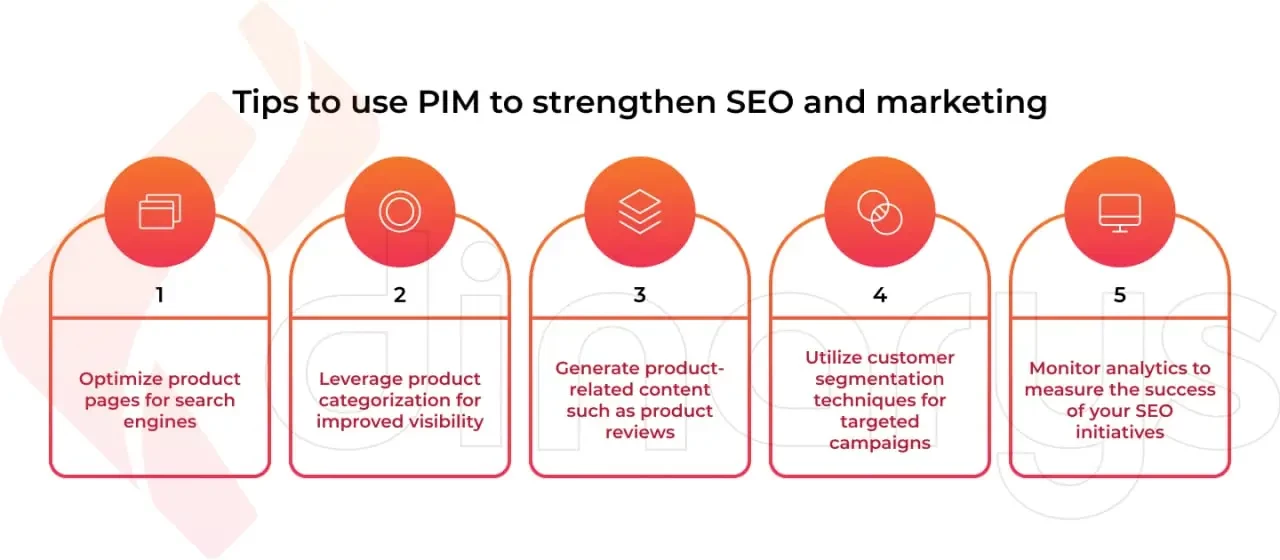
By following PIM best practices, organizations can provide a great customer experience and achieve success with PIM. Organizations can maximize their product offerings to customers and drive business growth by providing the right product data visibility, ensuring product accuracy and consistency, and implementing a PIM platform.
Lets talk about itHave a project in mind?
Conclusion
PIM best practices are essential for businesses to remain competitive in today’s digital world. Implementing a PIM system requires an investment of time and resources, but the payoff is worth it. Using the right PIM strategy, businesses can better engage with customers, optimize product listings, and increase product sales.
Dinarys understands the importance of PIM best practices and can help you implement a PIM system that is tailored to your individual business needs. Contact us today to find out how we can help you get the most from PIM. Together, we can take your product listings to the next level.
Let professionals meet your challenge
Our certified specialists will find the most optimal solution for your business.


